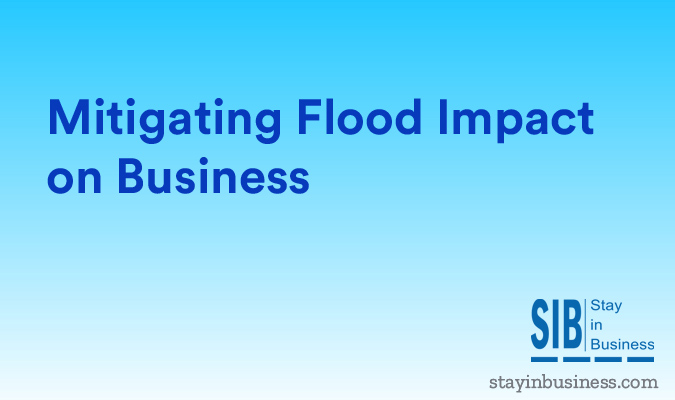Mitigating Flood Impact on a Business

Floods are seasonal occurrence in many parts of the country. A severe flood could wipe out any business. Taking appropriate steps is essential to ensure that the business survives such a disaster.
Floods are caused by many factors. Some of them are:
- When heavy snowfall melts, even areas which are well away from riverbeds, can get flooded
- Buildings and structures near rivers and coastal areas are at serious risk from fast moving waters. They can destroy entire structure in a matter of minutes
- Opening dam gates, breaches in levees and other flood control structures could lead flooding
- Flash floods can occur anywhere due to excessive rainfall
- Adverse weather conditions such as tornadoes, hurricanes, cyclones etc. can cause serious floods
Floods can occur with little or no warning. It is prudent for businesses to plan for such emergencies and proactive business managers would have steps in place to ensure that business operations resume in the shortest possible time.
Flood Hazard Knowledge
There are some basic flood factors which have to be taken into account to determine the risk level to a business. Some of them are:
- Duration – depending on the layout of the land, flood waters that normally recede quickly become trapped due to the terrain. The longer the business is exposed to flood waters, the greater the damage hazard.
- Depth – floods more than 3 feet deep, exert tremendous pressure on building walls, leading to cracks and collapse. A suitable safety factor has to be incorporated when designing the building.
- Velocity – as the velocity of flood waters increases, the pressure exerted on any structure goes up proportionately. Wave action due to storm surges can be extremely devastating.
Location of the business
The closer the proximity of the business to water, the higher the risk factor due to flooding. The best location for the business is as far away from any water body as possible. Flood maps for the area can be obtained from the National Flood Insurance Program or State Geologic Agencies.
Elevation of the business
One of the best solutions to prevent flooding is elevation. By elevating the building above the maximum flood level for that area, the building can be insulated against floods. The design of the building should include elements of flood proofing. Sealing a building against water ingress will help prevent damage from flood waters.
The Basement
The most vulnerable part of a building is the basement. Also soil that is saturated with rainwater, will exert high hydro static pressure on the walls of the basement. The basement should be inspected at regular intervals to detect signs of water damage and leaks. Immediate attention should be paid to potential problems. Basement walls should be designed to withstand hydro static pressure.
In spite of the best precautions, businesses can be adversely affected by floods. If small businesses are shut down for long periods, they may not have the financial wherewithal to survive. Therefore, it is imperative that all businesses take steps to ensure disaster recovery steps are in place. The damage may not only be to the building and equipment, but also to employees, who could be incapacitated or killed.
Planning for such disasters should be an essential part of a business’s survival and recovery strategy. Stay In Business focuses on assisting business develop business continuity and disaster recovery plans that assist business o get back on stream in the shortest possible time. A good source of information is can be found at the following website www.disasterrecovery.org
Categories: Disaster Recovery Planning, DR Plans, Flood
